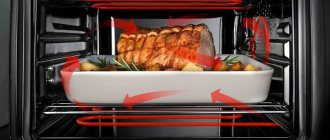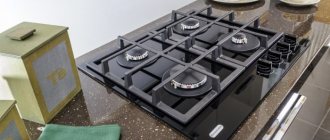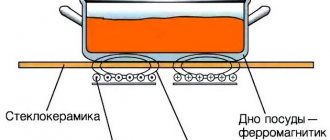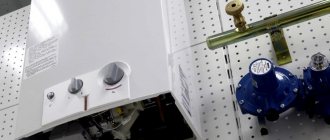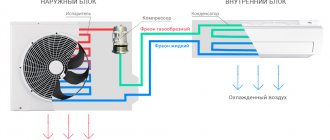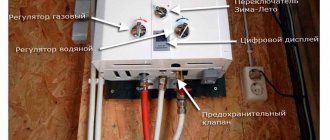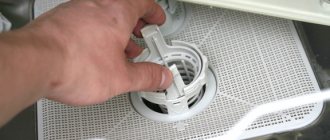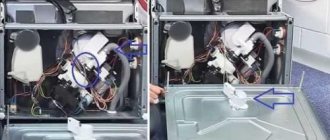An electric stove, like any other household appliance, has its own operating characteristics. Knowing how to use an electric stove, you can save time on cooking. But not only for fast and high-quality cooking, it is important to know the rules for using an electric stove. The manufacturer indicates the service life of electrical equipment is about 15 years, but with proper care and attention, the device can last much longer.
Correct use of burners
All manufacturers produce products with different types of burners and different numbers of them. Many brands (Electrolux, Indesit, Lex, Gefest, etc.) use advanced technologies. To save energy, Hi-Light, halogen and infrared burners are used. The stoves are also equipped with additional functions, including the presence of a temperature control. However, there are general rules for using stoves, regardless of the types of burners.
Dirt should be removed after each cooking. Otherwise, the stain left behind will dry out and it will be very difficult to wash it off. During the cleaning process, scratches may appear, which will not only spoil the appearance of the equipment, but also contribute to the formation of corrosion. For the same reason, do not leave wet dishes on the burners. The stove is washed with a clean cloth (sponge) that has previously been in water. When stains are difficult to clean, special chemicals are used.
You can learn more about cleaning electric stoves with different surfaces in this article.
When purchasing a household appliance, instructions are included along with the passport, which should not be ignored. In particular, it states that after installing the electric stove, it must be washed with a solution of soap, salt and water. This way you can remove the factory grease. If this is not done, the lubricating coating will burn out, filling the room with burning air. The surface of the slab is cleaned without metal brushes.
When preparing food on induction cookers of the brands “Gorenje”, “Hansa”, “Bosch”, etc., before turning on the electric oven, first place the dishes on the burner and set the required temperature. The power is adjusted at the top of the front panel for standard format cookers. If the cooking device is built-in, its control is located directly on the surface.
On a note! In expensive models of electric stoves, there is a touch screen next to each burner. With its help, the heat on a specific burner is controlled and monitored, and the timer is also turned on.
Read more: operating rules for induction cookers.
Rules for operating an electric stove
Today there is a wide variety of electric stoves. They differ in the heating method (cast iron pancakes, tape, infrared or induction burners), design (floor-standing, portable and built-in) and the materials used (enamel, steel, glass ceramics, glass, etc.). Therefore, recommendations for each variety will be different, but there are also general rules of use that you need to know and strictly follow in any case.
Important! When a new cookstove is delivered to its destination, the first thing you need to do is read the operating instructions. It will specify all the basic requirements and conditions for installation, connection, use and repair.
We should never forget that the electric oven is the most powerful and potentially dangerous device in the kitchen. Therefore, you need to follow all the necessary safety measures, in particular, carefully unplug the device from the outlet, holding the plug, not the wire, and the cord itself must not be bent or pinched .
You need to know that the most unsafe electric stoves are spiral ones (old models), they heat up slowly and take a long time to cool down, which lengthens the cooking process and increases the possibility of getting a burn. And the safest are induction panels, in which it is not the burner that heats up almost at lightning speed, but the bottom of the pan, so it is almost impossible to get burned on the surface of the stove.
Installation
To install complex equipment, it is best to contact specialists, since there are a lot of nuances that need to be taken into account and carried out:
- choose the location wisely so that the distance from the stove to the work surfaces complies with the standards;
- install the electric stove away from the sink;
- level all oven surfaces horizontally and vertically;
- use a separate outlet that can withstand the power declared by the manufacturer and supply the required current;
- ensure stable power supply;
- use a circuit breaker and a self-powered copper cable.
To connect an electric stove, you should lead a separate line directly from the distribution panel. For this, it is best to use cables VVG, VVK-ng, ShVVP, PVS. And if you plan to connect via a socket, then you will need stranded wires PVS or KG, which are more wear-resistant. The specific cross-sectional value depends on the voltage, number of phases and power consumption.
Important! The rated current of the circuit breaker (AB) should be one higher than what the stove consumes.
To further protect yourself from electric shock when coming into contact with faulty equipment, it is advisable to install an RCD (residual current device). It is connected after AB and must be of a lower value. In this case, be sure to check the grounding (no more than 30mA) and all screw terminals through which a large current will flow .
Inclusion
After all the wires and jumpers are connected, you need to check again that the circuit is assembled correctly and all live parts are closed. Then you should activate the AB and RCD, and then you can turn on the device and perform a control test - dry it at the minimum temperature of the burner for 1-2 hours. After this, you should let them cool on their own.
Advice! Before you start cooking, it is advisable to wash all surfaces with soapy water to remove any traces of dust and grease that may have remained after assembly. Otherwise, they will begin to burn and smoke, producing an unpleasant odor.
After connecting the stove to the outlet, you need to turn on the burners. In mechanical models, to do this, you need to turn the knob in the direction of the arrow or towards the icons that display the degree of heat. The more the handle is turned, the greater the power supplied and the greater the heat dissipation. For touch panels, you must first press the activation (power) button and then set the burner temperature.
Using the burners
The number and type of burners may vary depending on the manufacturer and model. Most modern brands, such as Electrolux, Lex, Dexp, Beko, Indesit, Hotpoint Ariston, Gefest and others, use innovative technologies in which heat transfer is carried out using Hi- Light burners, infrared emitters, halogen lamps or induction coils. This allows you to save energy, set the temperature more accurately and use additional functions. But there are recommendations that must be followed when using any type of burner.
- Do not place wet or dirty cookware on the burner - this can lead to corrosion (for metal surfaces), plaque formation (for glass), as well as burning, scratches and other damage to the coating.
- After cooking, immediately clean with a damp cloth (with detergent if necessary) - this will prevent the formation of stubborn dirt and burnt marks.
- It is advisable not to clean with metal brushes or abrasives.
- The bottom of the cookware must correspond to the size of the burner - a diameter that is too large will result in uneven heating, and a diameter that is too small will result in excessive energy consumption.
When preparing any dish on an electric stove, be it appliances from Gorenje, Bosch or another manufacturer, you first need to place the dishes on the heated zone, turn on the oven and set the temperature on the burner . If this is a built-in model, then the control unit is located directly on the hob, and if it is a freestanding stove, then the power control is located at the top of the front panel.
On a note! In more expensive and advanced kitchen appliances, a touch display is located near each burner, which allows you to set the desired mode, control residual heat and set a timer.
Temperature adjustment
For maximum effect and faster cooking, it is recommended to first set the heating power to maximum to quickly heat the food, and then reduce it to the set temperature. You can adjust the temperature conditions using mechanical knobs or using a special option on the control panel. In the latter case, to increase or decrease the power, you should use the “up” and “down” arrows or the “+” and “-” buttons. For older models of electric ovens with metal pancakes, the temperature adjustment process will be somewhat different from their modern counterparts.
Advice! Due to the fact that a cast iron burner heats up and cools down very slowly, it is recommended to first heat it well, and only then place the cookware for cooking.
Increasing and decreasing power, as a rule, is not related to the degree of readiness of the dish. Taking into account the fact that the heating zone in cast iron electric stoves takes a very long time to cool down, it is advisable to turn off the oven in advance so that the food can be cooked from the residual heat of the burner.
Additional options
To make using an electric stove more comfortable and efficient, manufacturers have introduced additional options. Now almost all ovens have a timer that allows you to control the cooking process, and an automatic shutdown, which acts as protection against unwanted situations (after time has elapsed, after removing dishes, when liquid leaks, etc.). The following functions are often found in modern induction and Hi-Light models:
- defrosting;
- heating;
- delayed start;
- memory;
- protection from children;
- booster;
- control over the rate of electricity consumption, etc.
Using the oven
When using an oven, the same rules apply as for the hob, but with one caveat - in a closed cabinet, heating occurs more evenly and faster, and cooling occurs more slowly . Therefore, you should adhere to a number of additional recommendations related to more efficient use of the oven.
- It is best to cook food in the middle of the oven. In other words, use the middle shelf and place the food in the middle of the baking sheet. But you can cook on the lower level.
- When baking, it is better to first use the maximum temperature to form a crust (raise the dough), and then set it to the minimum so that the dish inside is “cooked” until cooked.
- Dishes are best prepared in dishes made of ceramic, cast iron, clay (fireproof) and glass, with thick walls and bottom.
- To preserve the juiciness of meat and fish products, you should use foil or a sleeve.
- At the final stage of cooking, you need to open the door slightly. And if the dish has been cooking for more than an hour, then the oven needs to be opened completely.
As a rule, in electric ovens the heating element is located on two sides - top and bottom. Therefore, you can choose the appropriate modes based on your needs.
Advice! If you bake a product covered with fruit or cook porridge, it is better to use only bottom heat. If you need to cook in clay pots, then intensive heat transfer from below and standard heat transfer from above will do. Or you can choose a universal mode, where the lower and upper heating elements are heated to the same temperature.
Using the grill
Nowadays, the grill mode in the oven is very popular - it allows you to evenly bake meat, fish and vegetables, forming a golden crust and maintaining juiciness and taste. This is done thanks to a special electric or infrared heating element located on top of the oven. Products are baked on a spit or on a metal grate. The basic rules and recommendations for using a grill are not very different from those applicable to an oven, but there are a number of specific recommendations.
- Given the strong heating inside, you need to periodically open the door and exercise extreme caution during the interaction process.
- Products should be placed no closer than 10 cm from the heating element.
- If the design does not provide a spit, then the meat or vegetables should be periodically turned over with special devices for better roasting on all sides.
- You need to make sure in advance that the released fat or juice flows into a special container and does not contaminate the oven.
- After cooking, it is better to immediately clean up spills and food residues as soon as the grill has cooled down. Otherwise, the next time you turn it on, they will burn and smoke.
Temperature setting
When cooking, after the dishes are placed on the burner, turn on the maximum heat power. When the food heats up quickly, adjust the desired temperature. This will reduce the cooking time and provide maximum cooking effect. The temperature mode is set on the control panel using mechanical knobs or touch buttons, depending on the type of control. To decrease or increase power, there are indicators “down”, “up” or “plus”, “minus”.
Electric stoves of outdated models are switched on incorrectly. Considering the fact that cast iron pancakes tend to heat up and cool down slowly, the burners should be well heated before cooking. You need to turn off the oven before the food is cooked. Slightly undercooked foods will “cook” from the heat of the cast iron.
How to regulate the temperature?
So, you are starting to cook on an electric stove for the first time. Regardless of what burners it has and how it is controlled:
- Turn on the stove.
- Heat the burner as high as possible.
- Place the pan with the prepared products on the disk.
Important! Getting used to this order is not so difficult. Turn on the stove, and then start processing the food - peeling, cutting and everything else that the recipe requires.
To reheat a dish
If you don’t need to cook anything, but just want to heat it up (or let the food simmer), proceed as follows:
- Preheat the burner to maximum temperature.
- Place a saucepan or frying pan with a dish on it.
- Turn off the burner.
Bring to readiness
Many recipes advise bringing the dish to readiness after it has been boiled or stewed over high heat. The burner is hot, there is no point in turning on the second one, and it may be busy. It's better to do this:
- Turn off the hot burner.
- Remove the pan for a few minutes.
- Wait until the hotplate has cooled down.
- Turn it on and set the thermostat to minimum or medium.
- Place the pan and continue cooking.
Milk soup and porridge with milk
To prepare dairy dishes, the temperature of the burner must be gradually reduced. How to do it?
- Bring the dish to a boil.
- Change the regulator to a lower temperature.
- After a few minutes, reduce the heat again.
Stewed meat, fried mushrooms and the rest
Foods are usually stewed and fried without adding water. The procedure in this case will be as follows:
- Heat the disc until red hot.
- At short, regular intervals, reduce the temperature by one notch.
Important! Different stoves have different heating power levels. This depends on the manufacturer, that is, the temperature reduction time must be calculated independently, dividing the cooking time by the number of levels.
Secondary functions
To make cooking a complete pleasure, manufacturers are constantly introducing new options. For example, many housewives have already realized the importance of a timer, thanks to which the cooking process is always under control. Automatic shutdown helps prevent unwanted moments.
Modern models of electric stoves have the following capabilities:
- protection from children;
- defrosting;
- memory;
- heating;
- control over consumed electricity.
How the device works
The operation of an electric oven is based on the effect of infrared radiation on products placed in the chamber. The emitter is the top or bottom panels of the camera, and in some cases, the side walls. They are heated by heating elements built inside.
In modern models, you can regulate the current flowing through each heating element, thereby controlling the uniformity of baking.
Even if there are TENs located in pairs on opposite panels, it will not eliminate the uneven exposure to IR radiation. Regulation may not be as effective, and it will take up all your free time. Forced convection will help establish the same temperature in the chamber. It is carried out using a fan, which forces air to circulate, evenly distributing heat inside the chamber.
Dishes from an Italian small oven
This effect has several advantages. The uniform effect of heat allows you to cook the most complex dishes that do not tolerate burning. Due to the fact that heat does not accumulate in the upper part of the chamber, it “works” most efficiently, which means cooking time is reduced.
Good to know: A small rating of high-quality electric mini ovens
The right dishes
When cooking food, you need to place a cookware on the glow zone, the bottom of which matches the size of the burner. If the bottom of the container is smaller than the heated surface, there will be a waste of electricity. If it’s the other way around, the heating will be uneven. The bottom of the pot or frying pan must be level so that the heat exchange between the cookware and the surface is measured. When using uneven cookware, the following problems may arise:
- deformation of burners;
- the heat exchange between the dishes and the burners will deteriorate, which will lead to uneven heating of the food in the dishes;
- Differences in the pressure of the cookware on the surface of the burners are formed, which can lead to damage to the coating, and at high temperatures, its destruction.
In addition, electric stoves with glass-ceramic surfaces are easily susceptible to mechanical damage, so the cookware should not be too heavy or slip out of your hands due to poor grip.
To prevent damage to the surface of the burners, do not place cookware with a wet bottom on them. If, for example, the pan has just been washed, you must first wipe it dry.
Experts recommend not to create contrasting temperatures yourself: do not place a pan of cold water on the hot surface of the heating element. It is better to place it on a cold disk for simultaneous and uniform heating.
What kind of cookware should I use for electric stoves?
@kvartblog.ru
A smooth surface is very sensitive to damage. This imposes restrictions on the choice of cookware.
Important! Old objects with uneven or damaged bottoms and objects that are too heavy should not be placed on glass ceramics.
For safe use the following materials will be used:
- special alloy for induction heating systems;
- heat-resistant glass;
- enamelled steel without damage;
- stainless steel;
- cast iron frying pans with a flat bottom.
It is very important that the utensils have strong handles. An accidentally dropped heavy frying pan can crack the glass ceramics.
It is also important that pots and pans have a flat bottom. Otherwise, they will heat up unevenly and the device may become damaged.
The diameter of the bottom should always correspond to the size of the burner. This way, food will cook evenly and energy will not be wasted.
Basic rules for using an electric oven
As for the hob of an electric stove, there are operating rules for the oven. Today, appliances are found with two types of ovens: with and without a thermostat, but the principle of their operation is not too different.
Whatever the oven is, it is still worth knowing the basic rules for its operation.
- Stew and bake on the middle shelf in the middle of the baking sheet; there is no need to use the top level for such purposes. The lowest level is ideal for boiling vegetables.
- When baking or stewing, it is best to use two different temperature settings. The first half of cooking is best done at the highest temperature, and the second half at the lowest temperature.
- If you have difficulty determining the temperature inside the oven, you can check it with plain paper. To do this, place a white sheet on the center of the baking sheet and place it in the turned on oven. At low temperatures, the paper will turn brown in about 10 minutes, and at high temperatures, after 3 minutes. If you have a thermostat, determining the temperature will not be difficult.
There are also special thermometers for ovens. - For the oven, it is best to use dishes made of ceramics, cast iron, refractory clay or glass. When cooking, you can take foil; it is better to wrap the baked product in two layers so that it does not tear and the resulting juice does not leak out.
- After half the cooking time, it is recommended to open the oven door slightly.
How to turn on the stove?
Regardless of what stove you are going to cook on, you must follow a number of rules. In any case, read the instructions. But it may not be there, then first make sure the device is safe.
Gas stove
Carefully inspect the markings on the front panel – where the handles are:
- Determine which burner each knob controls.
- Locate the supply pipe.
- Open the valve - the handle should be parallel to the stove.
- Light the burner.
- Place the pan on the burner.
The burner can be lit;
- using a match;
- a special device;
- using the built-in ignition.
How to turn on the stove:
- When igniting manually, light a match, bring it to the burner, and with your other hand turn the knob that controls the burner.
- When the gas lights up, quickly remove your hand.
- The lights should be located around the entire circumference.
- If so, adjust the flame.
There are also special lighters for igniting burners - electric or piezo:
- Remove the piezo lighter from the safety lock, and then proceed in the same way as with a match.
- Before lighting the burner, plug the electric lighter into an outlet.
Important! Modern gas stoves also have a built-in ignition. It is located on the front panel - in the same place as the handles, on the left side. You can recognize it by the marking - there is usually a spark drawn next to it. To light the burner, you must simultaneously press this button and turn the knob. There are also models of stoves with automatic ignition, when a flame appears immediately after turning the knob.
The oven is turned on in the same way as the burner, only a match or lighter must be brought to the holes inside the cabinet, and this must be done quickly.
Important! Don’t forget that any kitchen should have a high-quality hood above the stove. We have prepared a detailed review in which you will find useful information about different models and installation rules for electric hoods.
How to turn on the electric stove?
An electric stove is, of course, much more convenient and safer than a gas stove. To turn on a regular stove, look around the front panel and find the knob that controls the burner you want.
Next to this knob you will also find markings that allow you to understand how much you need to turn it to obtain heating at a certain power. Zero means that the burner is turned off, followed by designations from 1 to 3. “Three” - maximum heating.
Important! A stove with touch control is even easier to turn on; just a light touch on the desired buttons is enough.
In the most modern stoves with touch control, turning on and selecting a mode is carried out by simply touching the desired buttons.
Important! To make your kitchen cozy and beautiful, so that you never lose the desire to cook delicious food and experiment with different recipes, use our furniture arrangement ideas.
Grilling
The presence of a special infrared or electric heating element in the oven helps to perfectly cook vegetables, meat and fish. The products are baked evenly, maintaining taste and juiciness, as well as being covered with a golden brown crust. The grill function on the control panel is most often indicated by a wavy line. It can be combined with other cooking modes.
Food is prepared on a metal platform or spit, not forgetting to take into account the operating instructions.
- The temperature inside the cabinet reaches its maximum level, so the oven door is opened periodically.
- The products are laid out in such a way that the minimum distance from the heating element is 10 cm.
- Without a spit, the food is turned over on its own.
- Before you start cooking meat or vegetables, you need to place a tray into which the fat will drain.
- After cooking food, you should immediately wash the inside of the oven to remove any dirt.
Following simple maintenance rules will help you use the electric stove for a long time without breakdowns or malfunctions. After all, as you know, the most common cause of breakdowns of an electric stove (and other household appliances) is improper operation. At the same time, not every home craftsman can carry out repairs with his own hands, because this requires knowledge of the basics of electrical engineering and the structure of the stove.
What types of slabs are there?
In modern apartments you can see a variety of cooking devices from Bosch, Lex, Electrolux, Ariston, Electrolux and Samsung:
- gas stoves;
- electric stoves with metal burners;
- electric stoves with glass-ceramic burners;
- induction cookers;
- numerous small appliances - toasters, waffle irons, coffee makers, etc.
At the same time, glass-ceramic hobs are becoming increasingly popular. Housewives, especially those who have to cook a lot often, are attracted to:
- safety compared to a gas stove;
- speed of heating and cooling compared to metal burners;
- ease of operation - no need to turn the knobs;
- ease of care - any stains can be removed with a slight movement of the hand;
- no soot during cooking;
- no burning or overheated fat odors.
Important! The creation of such a slab is amazing in itself. This material was not at all intended to please cooks. It was invented for ultra-precise astronomical instruments, and only then one German company decided to use it for “smart” devices that can make life easier for the most ordinary consumers.
However, this kitchen miracle also has some disadvantages:
- you need to get comfortable with the device, and first of all, understand how to turn on the equipment, set the time on the stove;
- So far, such panels are more expensive than stoves with metal burners.
Safety requirements
Using an electric oven is not difficult, but it is important not to neglect safety.
Observe the following rules:
- do not use the oven without grounding;
- do not leave operating equipment unattended;
- do not cook in containers that are not intended for high temperatures;
- do not keep flammable objects and liquids nearby;
- Only process and wash the oven when it is de-energized.
Check the oven's power cord periodically. If there are wiring problems or malfunctions, do not use the device until the problem is resolved.
Installation of the stove
It would seem that there is nothing complicated - bring the stove into the kitchen and plug it into the outlet. But even in such a simple matter, there are pitfalls: - the place to install the stove should be away from the sink and be level; — constant power supply from a good power outlet is required; — the distance from the electric stove to the working surfaces must comply with established standards.
Rules for using burners
In order to effectively use an induction furnace, it is not enough to navigate the switching on and adjustments,
- How to properly connect a gas stove in an apartment, standards for self-installation
You also need to follow some rules when working with it: Do not place wet or dirty dishes on a hot surface; — Wash the stove immediately after cooking; — When cleaning, use only soft products that will not scratch the surface.
In addition to all their versatility and convenience, modern glass-ceramic induction hobs look very nice in the kitchen, adding aesthetic pleasure and simplifying the cooking process.
Kitchen stoves are divided into gas and electric. The latter are considered safer, since when they are used there is no direct contact with fire and there is no danger of gas leakage. However, there is a risk of electric shock or burns. Therefore, when operating equipment, it is important to comply with safety standards and basic recommendations of the manufacturer.
The article will tell you how to use an electric stove correctly to minimize risks and extend the life of the device.
Content
The main advantage of an electric stove over a gas stove is safety of use. There is no contact with open fire, no need to worry about gas leaks. It is easier to protect the device from accidental activation by small children.
When cooking food, soot and harmful combustion products are not released, as happens when using gas. Therefore, there is no need to turn on the hood at full power. The equipment gets dirty less and is easier to clean than gas equipment.
In the oven of an electric stove, it is possible to set the temperature exactly down to a degree, which is difficult to do in a gas stove. But you cannot quickly adjust the heat flow on the burners. The housewife will have to monitor the cooking time of the dish and 10-15 minutes before it is ready, reduce the heat or turn off the appliance so that the food simmers at a decreasing temperature. On gas appliances, the fire is reduced or turned off instantly.
Electric stoves are characterized by high prices and operating costs. Their work depends on electricity, which sometimes goes out.
- Comparison of the best models of Lysva stoves with a large oven
There are a large number of different models of electric furnaces, which differ in the heating method (cast iron pancakes, belt, infrared or induction), the material used (glass, glass ceramics, steel, enamel, etc.), design (portable, floor-standing and built-in).
Recommendations on how to use an electric stove are different for each type, but there are general rules that should be followed:
- When using the equipment, observe the necessary safety measures, as this is a powerful and potentially dangerous device.
- The device is carefully unplugged from the outlet, holding the plug rather than the wire. The cord is not bent or pinched.
- When purchasing a new device, be sure to study the operating instructions, which indicate the basic requirements for installation, connection, use and repair of the stove.
- The equipment is installed with the help of a specialist. They choose the location wisely so that it complies with the standards and is equipped with a separate outlet and hood. They think about the organization of wiring and grounding in advance so that the operation of the electric stove is safe.
- The stove is placed away from the sink, as water ingress can cause a short circuit.
- It is not recommended to place the unit next to the refrigerator. High temperatures can damage its housing.
Attention. For additional safety, an RCD (residual current device) is installed.
Advantages
Electric kitchen ovens have many positive qualities. These include:
- high technical characteristics;
- compact size, mobility;
- quick heating to the desired temperature;
- large selection of modes and options;
- convenient button or touch control;
- a wide selection of models with different designs, configurations and functionality;
- simplicity and comfort in operation and maintenance.
Electric ovens combine the operating principles of a microwave and an oven. Heating occurs due to resistive heating elements - heating elements. Infrared radiation is used for heat treatment, which is considered much safer than the microwave method of cooking.
Thanks to high-quality thermal insulation, the air practically does not heat up during operation of the device. The convection mechanism ensures uniform baking of dishes while preserving the natural taste and beneficial properties of the products.
Rules for using an induction hob
Some rules of use are relevant for all hobs, but some of them apply only to induction.
Installation and connection
For a built-in surface, you need to prepare a kitchen unit: cut a hole of the required size in the countertop and make sure that there is a suitable electrical outlet nearby and that the wiring in the house can withstand the load . During the connection process, the following requirements must be met:
- the device must be grounded;
- the wiring section leading to the plate or surface must be made of copper;
- The cross-sectional area of the wire must be at least 2.5 mm 2.
It happens that the device is sold without a power cable for connection to the network. An example would be Lex hobs and even individual models from well-known brands. In this case, you will have to buy a cord with a plug separately, but first you need to find out the parameters of the wire from the instructions or from consultants.
Attention! If the user is not sure that he can connect the equipment himself, it is better to leave this process to a specialist. Incorrect installation on your own can lead to damage to the device, loss of warranty, and problems with the home electrical network.
Before installing a stove with an induction top (such models are produced by popular brands Hansa and Electrolux), you should level the floor and strengthen it if the strength is in doubt. Whereas tabletop tiles (popular models from Esperanza, Kitfort, Gorenje and other companies) do not require installation. A hood is mounted above the cooking equipment or placed near the window. Recommended distances between the stove and walls, furniture, other equipment, as well as the size of the ventilation holes in the headset (for built-in panels) can be found in the documents for the device.
Advice! It is not advisable to place induction surfaces next to other equipment: magnetic fields can negatively affect the operation of ordinary household devices.
How to turn on an induction cooker/panel
Before using the device, you must wipe it with a soft cloth to remove packaging residues, dust and traces of factory chemicals (glue, lubricants). After connecting to the power supply, you need to put the device into operating mode: press and hold the power button for several seconds . When the equipment is ready for use, a beep will sound. To select a hotplate, press the same button without holding it down. The sequence of actions for different models is different; the purpose of the regulators and control methods are described in the instructions.
On a note! Many hobs turn on the appropriate section when a suitable pan is placed on it. Some models detect whether the delivered container is full - they will not turn on the heating under the empty container.
How to turn off the stove
The induction surface can be turned off using the power button. Heating of individual burners stops if the food container is removed from them. A timer is used to turn off after a certain time.
Operating modes
The power is set by pressing the buttons marked “+” and “-“. Most stoves on the market have touch controls, but there are also models with mechanical regulators that need to be turned clockwise to increase power and counterclockwise to decrease. If the power scale is made in the form of a line with divisions or numbers (Slider Control in Midea surfaces), you need to slide your finger along it to the right or left - in the direction of increasing or decreasing the degree of heating. In premium models (for example, in Bosch surfaces), the heating strength is set automatically depending on the size of the dishes.
On a note! The number of degrees of power gradation ranges from several in budget and desktop models to one and a half dozen in expensive panels from famous manufacturers. The temperature changes very quickly, almost immediately after pressing the sensor or turning the knob.
Additional options are available on induction hobs.
- The power of adjacent burners can be combined to accommodate oblong-shaped cookware (long roasting pans and roasting pans). Such areas are marked on the surface with lines.
- As with gas stoves or electric stoves with heating elements, the performance of the burners may vary. This information is also indicated in the instructions.
- A set of automatic programs with predetermined temperature and time parameters simplifies cooking and allows you to quickly get used to the stove or surface. The transition from one mode to another occurs instantly. The number of programs varies depending on the model.
